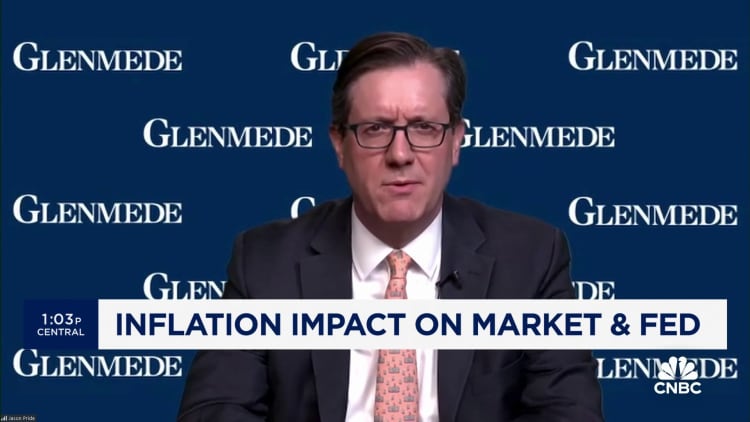A customer shops for food at a grocery store in San Rafael, California, March 12, 2024.
Justin Sullivan | Getty Images News | Getty Images
The U.S. is still grappling with higher inflation, government data released this week shows.
But there are some bright spots for consumers. Inflation is lower than its 2022 peak. And prices are actually falling in some categories, which is known as deflation.
Overall, the U.S. is in a disinflationary process, a slowdown in inflation. This “does not mean prices have come down, it just means that they are increasing at a slower rate,” said Brett House, an economics professor at Columbia Business School.
The consumer price index — which tracks the overall change in prices consumers pay for goods and services — was up 0.4% in February and 3.2% versus a year ago, according to new data released by the Bureau of Labor Statistics on Tuesday.
“It is reasonable that people continue to be frustrated by high prices,” House said.
While inflation is an overall increase in prices, that doesn’t mean all prices go up, said Eugenio Aleman, chief economist at Raymond James.
“Some prices go up, some prices go down,” Aleman said. “But on average, they go up.”
In February, the CPI data shows, certain categories of goods and services actually saw year-over-year declines.
At the top of that list is eggs, which saw a 17% decline over the preceding 12 months as of February.
Egg prices are an example of “deep deflation” — where prices are falling dramatically, Aleman said.
Egg prices are an anomaly compared with other categories, since their increases were driven by an avian flu that led to a shortage, he noted.
Other categories that saw year-over-year double-digit declines include health insurance, which was down 19.7%; laundry equipment, which fell 11.3%; and car and truck rentals, which declined by 10%.
Categories of goods and services that were popular during the Covid pandemic and in its immediate aftermath also saw declines, including televisions, furniture, airline fares, and hotel and motel rates.
Used cars and trucks saw year-over-year declines after a very large increase in prices because of the inability to access new cars due to supply chain issues.
“There are sectors that have their own reasons why they are in deflation,” Aleman said.
While consumers may hope prices will subside back to pre-Covid levels, that is not going to happen, Aleman said.
“The biggest reason for that is because salaries and wages have been coming up,” Aleman said.
Real wages — defined as wages adjusted for inflation — are higher overall today than they were in 2019.
Inflation fight ‘won’t be a straight line’
While the Federal Reserve is expected to start lowering interest rates after a series of hikes to curb inflation, experts say that may not happen imminently, based on the February CPI results.
The central bank is aiming for 2% inflation, and typically looks to another inflation measure, the personal consumption expenditures price index, which was up 2.8% from a year ago in January.
“We’re getting numbers that I think are broadly consistent with the Fed’s messaging that said it would not be a straight line” to reach its 2% inflation target, Columbia’s House said.
More from Personal Finance:
Why gas is so expensive in California
Credit card users face ‘consequences’ from falling behind
After Biden praises progress on inflation, economists weigh in
The Federal Reserve will pay particular attention to core inflation — the change in the costs of goods and services excluding food and energy sectors. Core inflation came in higher than anticipated in February and was up 0.4% for the month and 3.8% for the past 12 months.
“It’s going to be a slow process to bring down inflation,” Aleman said.
High inflation is not unique to the U.S. Global headline inflation is expected to fall to 5.8% in 2024 and 4.4% in 2025, the International Monetary Fund said in January.
However, some countries have much higher inflation rates. In Argentina, the 12-month inflation rate, through February, rose to 276.2%. People who live there tend to take steps to protect the value of their money when they get paid, such as by converting to dollars or depositing it in bank accounts earning short-term interest, Aleman said.
Credit: Source link




